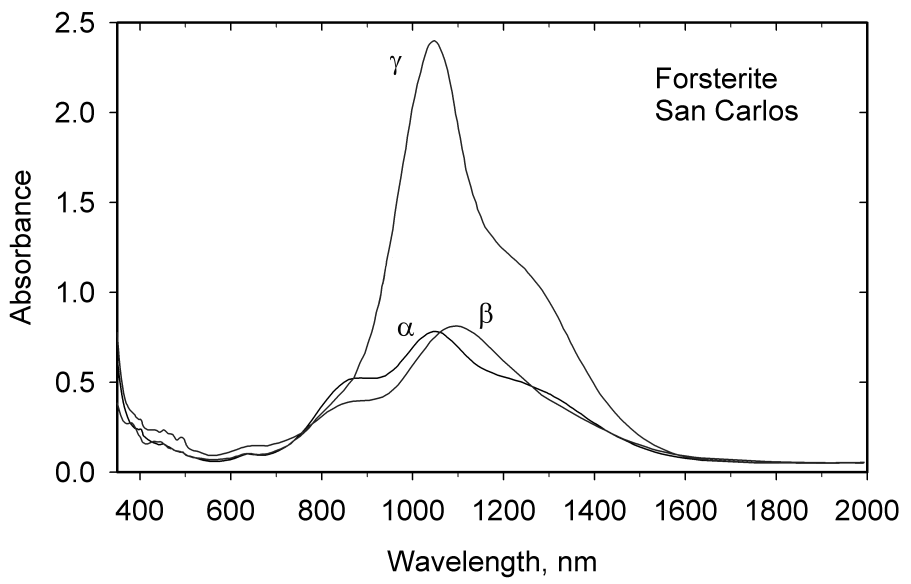Optical Spectroscopy
In: Reviews of Mineralogy and Geochemistry, volume 78
George R. Rossman
Division
of Geological and Planetary Sciences
California
Institute of Technology
Pasadena,
CA 91125-2500, USA
abstract
Optical
spectroscopy is concerned
with the measurement of the absorption, reflection and emission of
light in the
near-ultraviolet (~250 nm) through the mid-infrared (~3000 nm) portions
of the
spectrum. The human
interface to the
geological and mineralogical world is primarily visual. Optical
spectroscopy
is, in particular, well suited to investigating the origin of color in
minerals. The reflection spectroscopy of minerals has been motivated to
a large
extent by interest in remote sensing. Emission spectra are usually
studied in
reference to luminescence phenomena. Studies of mineral color, metal
ion site
occupancy, oxidation states and concentrations have generally been
done with
absorption spectroscopy. This chapter concentrates on single crystal
absorption spectroscopy.

Optical absorption spectrum of forsterite showing absorptipon bands from Fe
2+ in both the M1 and M2 sites.

